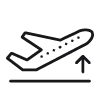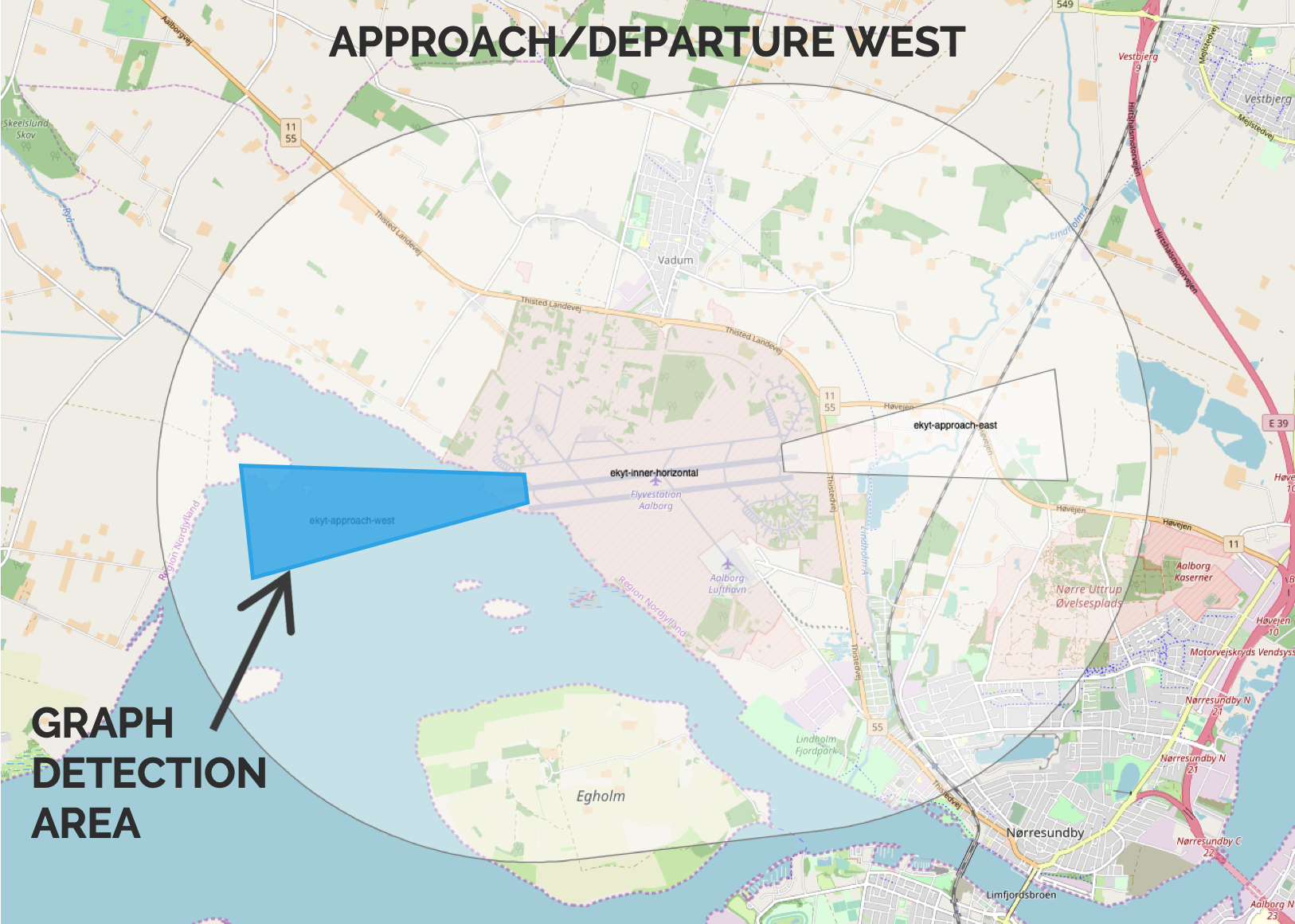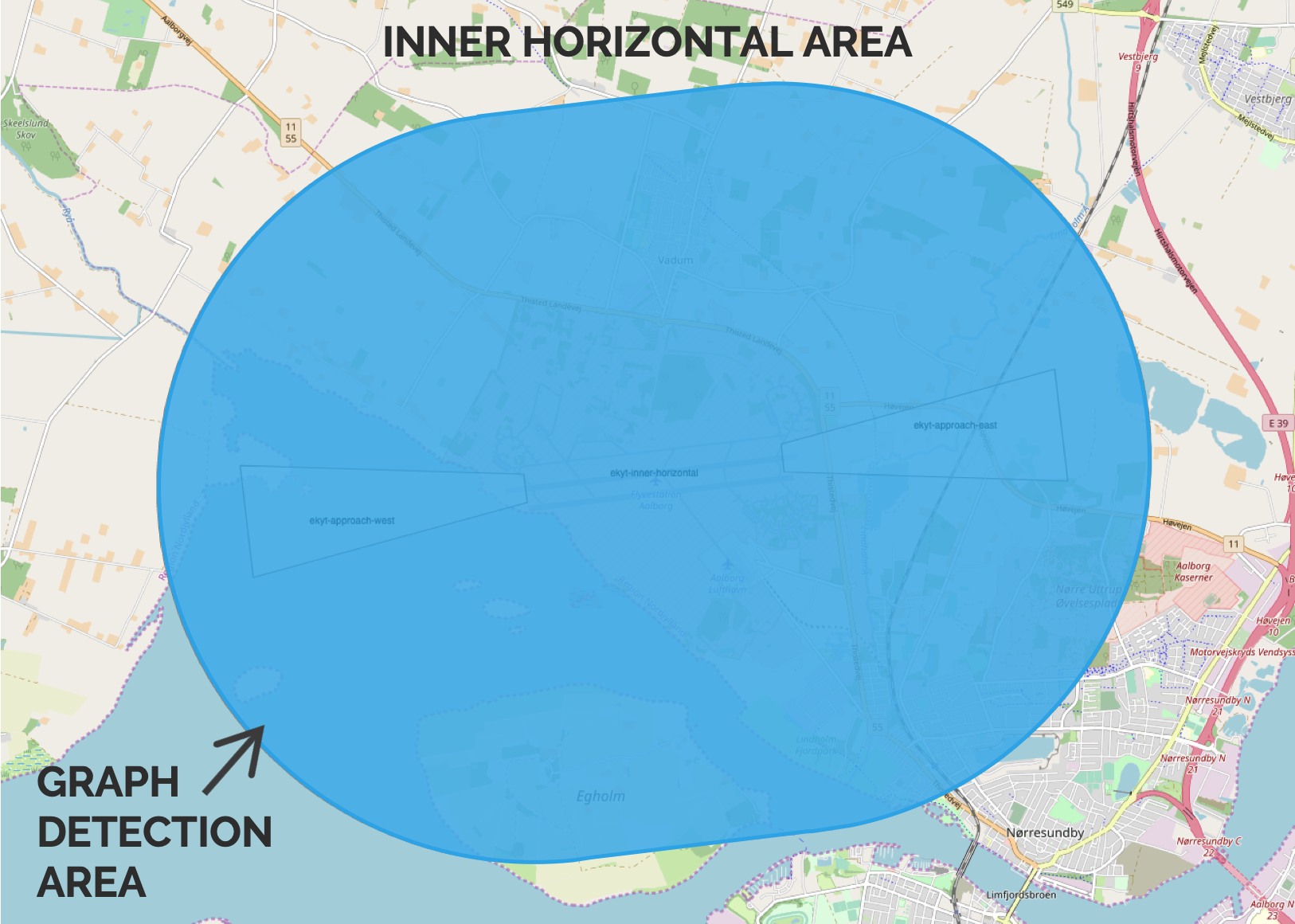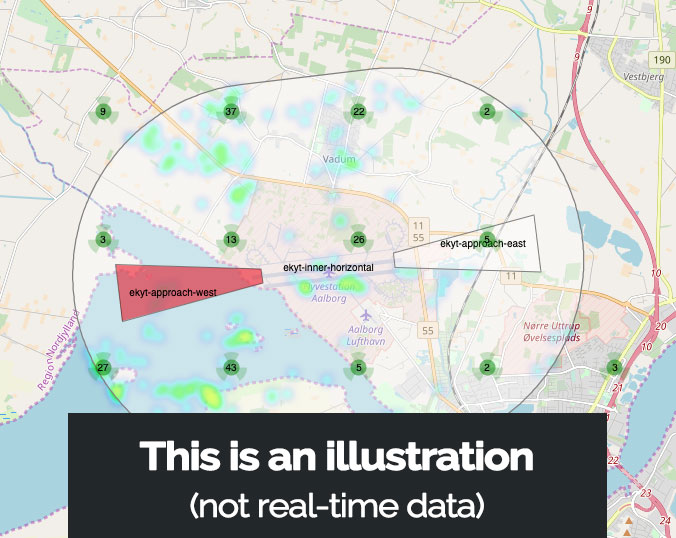Revolutionary
AscendXYZ Avian Radar solution for airlines
Radar detection and forecasting of bird activity in Aalborg airport
Based on the radar measurements
of bird activity pilots then can:

Use this information during approach and departure briefings to prepare for the event of a strike

Use the full runway available in peak risk periods (no intersection takeoffs)

Avoid low-level operations in areas with high bird activity (this would mainly apply for school flights, helicopters, general aviation, and military operations)

Increase climb gradient to outclimb the risk area – if the area is close in, it also means traveling a shorter distance in a high-risk area

If weather and traffic permits, consider take-off or approach in the opposite direction if risk is lower at one runway end (see images below)

Reduce speed on initial approach to reduce the impact energy in case of a strike
Graphs below are live
and updated every 15 minutes

Real-time detection
The graphs are generating a bird activity index and a forecast based on the real-time radar detection.

Graph information
You can see historical activity data 36 hours back and an activity forecast 18 hours forward.
The black line is the actual bird activity, the blue line – predicted bird activity.

Supported browsers
For the best results, we suggest using Google Chrome, Safari, or Firefox as your internet browser to view this page.
Bird activity forecast approach/departure west

Bird activity forecast approach/departure east

Bird activity in the inner horizontal area

Activity indications

Real-time bird activity map
The map below shows the bird activity at Aalborg airport in real-time. The map updates every 10 seconds, the heatmap is based on the last 5 minutes bird activity.
Airline and pilot use of radar data
Historically, the airport safety and wildlife management (and, in some cases, bird control units) were considered to be the main users of the avian radar data. However, Aalborg Airport has, in collaboration with AscendXYZ, identified that pilots, airline safety management, and flight operations’ departments can benefit from the data as well. By including airline flight operations and pilots in the risk mitigation we can significantly improve flight safety by enabling pilots and airlines to act on the bird risk and hazard monitoring from an operational perspective.
Civil and military airports have been managing the bird strike risk within the airport area by taking mitigating actions to disperse birds. Airports are tasked with “monitoring the airport surroundings for landscape changes that could impact wildlife behaviour”. Aalborg airport is monitoring airport surroundings with a satellite solution. However, up until now it has not been possible to perform mitigation from an operational perspective.
Airline safety management
Airline safety management staff can recommend specific risk mitigating measures to their pilots to actively mitigate the risk from an airline side e.g. “Use full runway”, “Depart to the east in peak risk periods, if weather and traffic permits” etc. The heat map shows where the activity is. Additionally, departure and approach corridors change colour (to yellow and red) indicating activity levels increased to the medium or high level. Based on this information airline safety management can recommend mitigating procedures matching the threat level.
Approach and departure corridors are shown in the map. The corridors’ geographical description matches the last 3000 meters of the approach surface, as described in ICAO annex 14. 3000 meters have been chosen because an approaching aircraft on a 3-degree glide will pass 500 feet (height) 3000 meters out and, statistically 75% of all bird strikes occur below 500 feet. 2/3 of the bird strikes occur on approach and 1/3 on departure. Additionally, the oval polygon visible on the map matches the inner horizontal surface.

The radar captures bird activity information in an approximate 11-degree upward angle covering both departure and approach tracks.

ATC communication
Air Traffic Control (ATC) is operating in a complex environment with a high workload and it can be difficult to implement additional systems or integrate new tasks into the existing ATC workflow.
However, avian radar data will be referenced in the Aeronautical Information Publications (AIP). Note: ATC will state bird activity only upon request. It will be specified In the AIP where and what data is available to the airlines and pilots. Additionally, it should be mentioned that pilots are requested to state to ATC if acting on the information, for example: based on the activity forecasts and real-time activity the pilot of a departing flight decides to perform continuous climb operations to 3000 feet in order to out-climb the close in high risk area at Aalborg Airport. In this case pilot should state to ATC:
“Tower, aircraft xx, we will keep a high rate of climb to 3000 feet due to bird activity”.
If there are climb restrictions in the assigned departure, this should be taken into consideration.
Above mentioned procedure allows airlines to implement the bird strike risk management in their standard operation procedures in collaboration with airports and ANSPs without assigning responsibility to ATC for monitoring avian radar real-time data and relaying the information to the air crews.

Training is available
Aalborg Airport is making training and system introduction available to airline customers in order to support the optimal use of the available radar data information (this does not include system integration cost into EFB solutions.) For support, training and/or general understanding please contact the solution provider at info@ascendxyz.com.

Feedback is essential
If you have any feedback to this user guide, or further development and use of the avian radar solution, please share it with us. You can give feedback via mail at info@ascendxyz.com or contact us for a meeting. We all have the same goal – safe uninterrupted aircraft operations.

This project has received funding from the European Union’s Horizon 2020 research and innovation programme under grant agreement No 880308.

